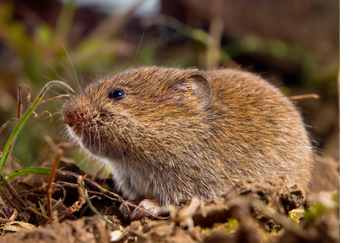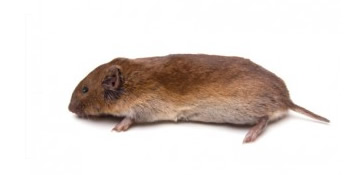Vole Insect Control Demystified: A Complete Review of Problem Discovery and Reliable Treatment Techniques
As home owners and garden enthusiasts, the breach of voles can be a consistent problem that requires a methodical method for reliable monitoring. By understanding the behavior patterns of these evasive rodents, one can obtain valuable understandings into their routines and preferences. From subtle indicators of invasion to the implementation of targeted control actions, browsing the realm of vole insect control requires a mix of understanding and calculated activity. In this extensive review, we will explore the nuances of vole invasion detection and dig right into the realm of effective treatment approaches that can secure your areas from these underground problems.
Recognizing Vole Behavior Patterns
Comprehending the intricate behavior patterns of voles is essential for successfully carrying out pest control procedures in farming and household settings. Voles, little rodents that look like computer mice yet with stouter bodies, are notorious for their fast recreation prices and voracious hungers for plants. By delving right into their behavior patterns, insect control professionals can gain valuable insights right into vole susceptabilities, habits, and choices.
Voles are primarily herbivores, eating a large range of plants, origins, roots, and bulbs. They are additionally respected tunnelers, producing sophisticated underground burrow systems for nesting and foraging (vole yard damage). By understanding these practices, insect control specialists can tactically put traps and bait stations along vole runways and access factors, boosting the likelihood of successful eradication
Furthermore, understanding of vole actions patterns can help in developing safety nets to deter future infestations. By dealing with factors that bring in voles, such as dense vegetation cover and easily accessible food resources, homeowner can make their premises less inviting to these destructive bugs. To conclude, a thorough understanding of vole behavior is paramount in developing sustainable and efficient pest control methods.
Identifying Indicators of Vole Problem
Effective vole pest control begins with quickly identifying the indications of vole invasion on residential or commercial properties. Among one of the most usual indicators of vole visibility is the existence of surface area paths. These paths are narrow pathways through grass or plant life that voles create as they take a trip between their burrows and food sources. Furthermore, vole droppings are one more clear indicator of problem. Vole droppings are tiny, cylindrical pellets that are typically found along their paths or near their burrows.
In enhancement to paths and droppings, chomp marks on tree bark and greenery are additionally indications of vole activity. The visibility of burrow openings in the ground suggests an energetic vole populace.
Being attentive for these signs can aid homeowner find vole infestations early and take ideal bug control procedures to stop additional damage.
Carrying Out Targeted Control Measures
What particular techniques can be employed to efficiently carry out targeted control steps for vole bug administration on residential properties? Applying targeted control measures for vole bug management needs a multi-faceted technique that integrates both prevention and elimination methods. One of the key approaches is environment alteration, which involves eliminating vole-friendly atmospheres such as tall yard, weeds, and debris near structures. Setting up obstacles like equipment fabric or gravel around yard beds and tree trunks can also aid deter voles - vole control.
Trapping is one more reliable method for regulating vole populations. Live traps can be purposefully positioned along vole runways or delve entries, baited with peanut butter or apple pieces. Once caught, voles need to be humanely gotten rid of to a different location to prevent reinfestation.

Natural and Environmentally Friendly Treatments
The adoption of environmentally mindful methods can play a crucial function in managing vole populations without creating injury to the community. All-natural and eco-friendly solutions use a lasting strategy to vole pest control, lessening the use of damaging chemicals and promoting biodiversity in the impacted areas.
One effective all-natural method is using killer urine or killer decoys. Killers like snakes, owls, and foxes are the vole's all-natural opponents. By purposefully positioning killer urine or decoys around the infested locations, voles might be deterred from resolving in those areas.
Furthermore, planting vole-resistant plant life can aid in decreasing vole damages. Plants such as daffodils, crown imperials, and Siberian squill are recognized to be unattractive to voles and can act as natural repellents.
Additionally, creating physical vole control obstacles like cord mesh or crushed rock around prone plants can prevent voles from accessing them. These barriers can assist protect gardens and landscapes without positioning any type of hazard to the environment or other non-target varieties. By integrating these environmentally friendly and all-natural treatments, vole infestations can be taken care of effectively while keeping environmental equilibrium.
Long-Term Avoidance Approaches
To sustainably attend to vole problems over time, executing aggressive actions is essential for lasting prevention strategies. By lowering thick plant life, compost, and clutter around buildings, you can make your property less attractive to voles. vole control.
Normal tracking of vole task is essential for early detection of any signs of infestation. Setting up vole catches can help in managing their population prior to it comes to be a full-blown infestation. It is also essential to seal any kind of entry indicate structures or frameworks to stop voles from gaining gain access to.
Furthermore, maintaining a tidy and tidy atmosphere can discourage voles from making your building their home. Eliminating food sources like dropped fruits, seeds, and family pet food can aid in making your residential property less attractive to these insects. By integrating these aggressive measures with all-natural solutions and effective therapy approaches, you can establish a thorough lasting vole parasite control strategy.

Conclusion
Finally, comprehending vole behavior patterns, determining signs of problem, applying targeted control steps, making use of natural and environmentally friendly remedies, and applying long-lasting avoidance strategies are vital actions in effectively managing vole invasions. By being positive and taking the necessary steps to deal with vole problems quickly, individuals can efficiently stop and control vole invasions in their residential properties.
From refined indications of invasion to the application of targeted control procedures, navigating the world of vole pest control requires a mix of expertise and strategic activity.Effective vole bug control begins with immediately recognizing look at this web-site the telltale indications of vole pop over to this site invasion on residential properties. Executing targeted control actions for vole parasite monitoring calls for a multi-faceted approach that integrates both avoidance and elimination approaches. Establishing up vole traps can assist in managing their populace prior to it becomes a full-blown invasion. By incorporating these aggressive procedures with all-natural solutions and efficient therapy methods, you can establish a thorough long-term vole bug control strategy.